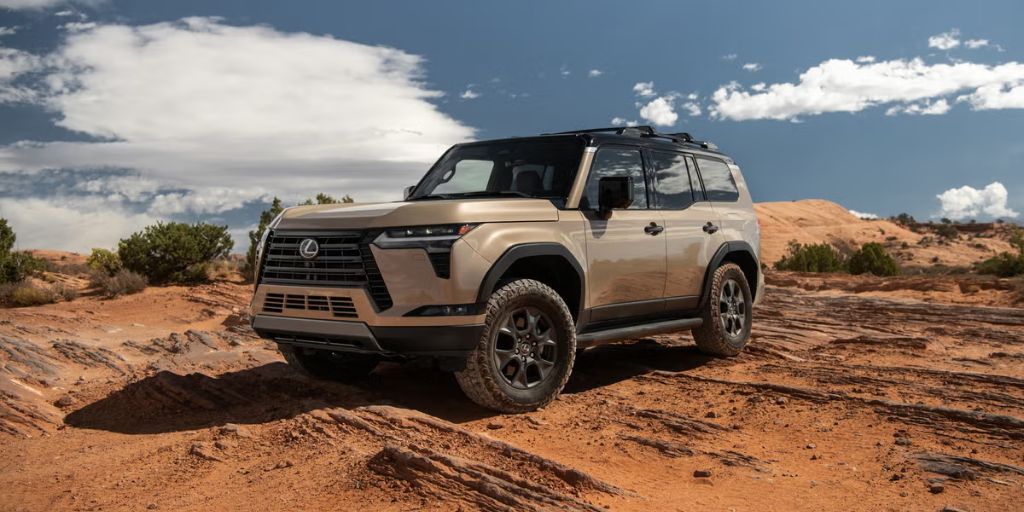When it comes to off-roading, most people focus on big tires, all-wheel-drive systems, or ground clearance. But there’s another critical metric that separates serious off-roaders from suburban crossovers: the approach angle.
This angle, measured in degrees, determines how steep of an obstacle a vehicle can climb without scraping or damaging the front bumper.
The higher the angle, the more capable the SUV is in rugged terrain. It’s a detail often overlooked but absolutely essential for trail riders, overlanders, and adventurers.
On the flip side, not all SUVs are built for dirt and rocks. Many are optimized for comfort, fuel economy, and on-road manners—resulting in low approach angles that limit off-road potential.
These vehicles may look rugged, but when faced with a steep incline or rocky ledge, they falter quickly, risking bumper damage or getting stuck.
This guide looks at 5 SUVs with the best approach angles—vehicles truly built for the wild—and contrasts them with 5 SUVs that struggle off-pavement, often due to design choices prioritizing aesthetics or road comfort over off-road capability.
Whether you’re shopping for your next adventure vehicle or just curious about which SUVs walk the walk, this comparison offers insight into what lies behind those big grilles and aggressive stances.
Also Read: 5 Cars With Legendary Timing Chains and 5 With Fragile Belts
5 SUVs With Best Off-Road Approach Angles
In the off-roading world, specs aren’t just marketing fluff—they’re survival tools. And one of the most critical specs is the approach angle, which measures the steepest incline a vehicle can climb or approach without its front bumper hitting the ground.
This single number can determine whether you crawl over a boulder with ease or leave behind your front fascia on the trail.
Approach angle is measured in degrees from the ground to the lowest part of the front overhang. The higher the number, the better the SUV can tackle obstacles like ledges, rocks, or sharp inclines without scraping.
Typically, an approach angle above 30 degrees is considered off-road-ready. Anything over 35 is elite territory.
Manufacturers of true off-roaders understand this. They design their vehicles with short front overhangs, high ground clearance, and aggressive suspension geometry to help them conquer steep and uneven terrain.
These aren’t just theoretical capabilities—owners of these vehicles frequently test them in real-world adventures from the Moab desert to the Rocky Mountains.
This list highlights five of the best SUVs currently on sale in terms of approach angle, combining factory data, off-road test reviews, and enthusiast input.
These models don’t just look rugged—they’re built to take a beating and keep climbing. They include icons like the Jeep Wrangler and newcomers like the Ford Bronco, all built with the trail in mind.
Whether you’re an off-road veteran or a weekend warrior eyeing your next trail run, these SUVs represent the gold standard for approach angles.
Their designs prioritize utility over flash and capability over compromise, allowing drivers to take on the backcountry with confidence.
1. Jeep Wrangler Rubicon
If there’s one SUV that defines off-road prowess, it’s the Jeep Wrangler Rubicon. Revered in the 4×4 community, the Wrangler doesn’t just offer legendary status—it backs it up with exceptional hardware, including one of the best approach angles in the industry.
The current-generation Wrangler Rubicon boasts an impressive approach angle of 47.4 degrees, placing it at the top of the segment for factory-built vehicles.
That number isn’t a coincidence. Jeep engineers designed the Rubicon specifically to master challenging trails like the Rubicon Trail in California.
The key lies in its short front overhang, high-mounted bumper, and solid front axle, which together create a nose that can approach sharp inclines without scraping or getting hung up.
The Rubicon also comes standard with 33-inch all-terrain tires, rock rails, and steel bumpers—all designed with serious trail use in mind.
Its suspension system provides a generous 10.8 inches of ground clearance, and the front and rear electronic locking differentials ensure traction in even the most uneven terrain.
Add in a disconnecting front sway bar for maximum articulation, and it’s clear this SUV is purpose-built to climb.
Even the Rubicon 4xe (the plug-in hybrid variant) retains the same geometry and performance specs, proving that electrification doesn’t have to come at the expense of capability.
For hardcore enthusiasts, Jeep even offers extreme off-road packages with 35-inch tires and upgraded axles, pushing approach angles and trail confidence even further.
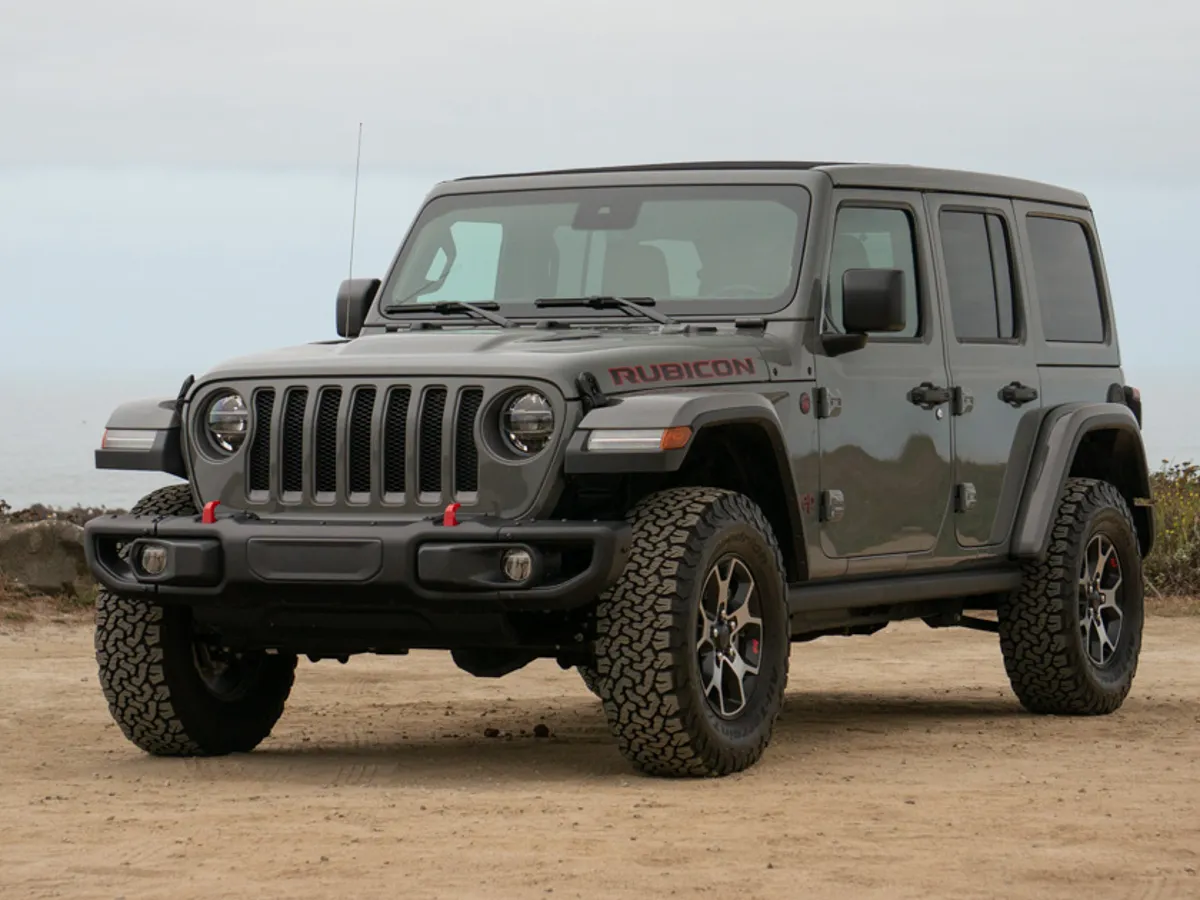
Importantly, the Rubicon doesn’t just win on paper. It’s a common sight on the most punishing off-road routes around the world, and it consistently outperforms rivals in real-world rock crawling, mud, and deep ruts.
When approaching a steep slope or rocky ledge, there are few vehicles that can match the confidence and clearance the Wrangler Rubicon provides.
In the world of off-road approach angles, the Jeep Wrangler Rubicon isn’t just a contender—it’s the benchmark. Whether stock or modified, it’s built to take on terrain that would stop most SUVs cold.
2. Ford Bronco Badlands
When the Ford Bronco made its long-awaited return, it didn’t just aim to capture nostalgia—it came for the Jeep Wrangler’s off-road crown.
And nowhere is that competitive spirit more evident than in the Bronco Badlands trim, which is purpose-built for rugged trails and challenging terrain.
With an impressive approach angle of 43.2 degrees, the Bronco Badlands stands tall among the most capable off-road SUVs you can buy straight from the factory.
Ford engineers knew they had to nail the basics: short overhangs, robust suspension geometry, and practical tire setups. The result is an SUV that not only looks trail-ready but backs it up with true off-road credentials.
The Badlands trim includes the Sasquatch Package as an option (standard on some sub-trims), which features 35-inch mud-terrain tires, 17-inch beadlock-capable wheels, Bilstein position-sensitive shocks, and front and rear locking differentials.
While the approach angle isn’t quite as extreme as the Jeep Wrangler Rubicon, it’s still well above the industry norm, and the Bronco’s independent front suspension gives it an edge in ride quality without sacrificing capability.
Its ground clearance clocks in at 11.6 inches, and its modular front bumper allows for further approach improvements or aftermarket customizations.
Another advantage the Bronco has is technology. Its Terrain Management System (TMS) includes G.O.A.T. Modes (Goes Over Any Terrain), which tailor throttle response, transmission behavior, and traction control for various surfaces like mud, sand, and rock crawl.
Paired with trail cameras and a front-facing off-road display, drivers can navigate steep or blind approaches with more confidence.
Importantly, the Bronco isn’t just trail-capable—it’s designed to take a beating. Its front fenders are made of easily replaceable composite panels, and its underbody features robust skid plates to protect critical components.
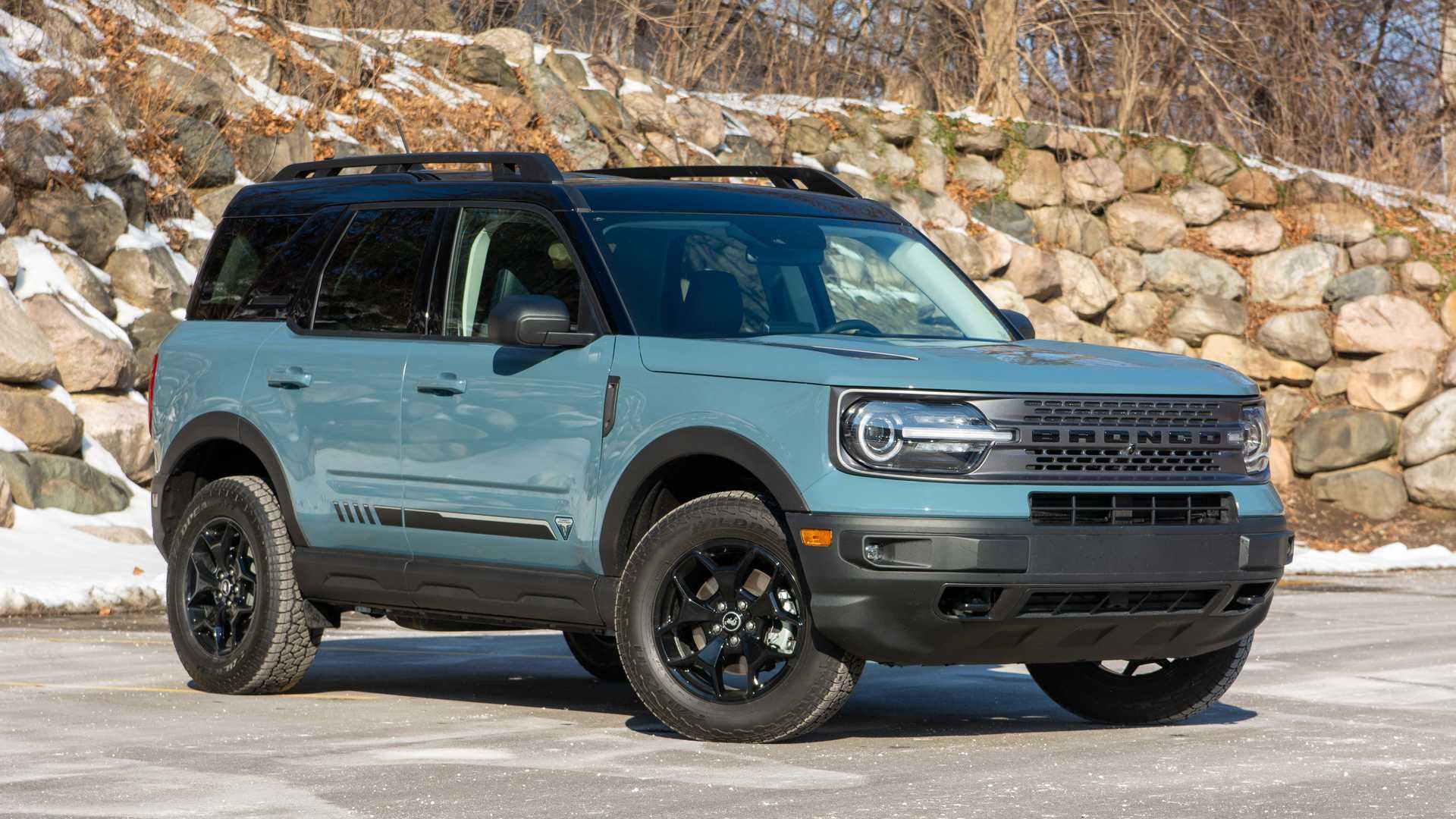
In the Bronco Badlands, Ford didn’t just revive a nameplate—they reimagined what a modern off-road SUV could be.
With aggressive approach angles, thoughtful engineering, and real-world trail performance, it’s more than ready to climb, crawl, and conquer.
3. Toyota 4Runner TRD Pro
The Toyota 4Runner TRD Pro is one of the last true body-on-frame SUVs still in production, and it wears that legacy like a badge of honor.
While newer competitors boast high-tech features and sleek lines, the 4Runner stays true to its roots: durable, rugged, and off-road capable.
And a big part of that trail confidence comes from its strong off-road geometry, including a respectable approach angle of 33 degrees.
Though it doesn’t reach the extreme numbers of the Wrangler or Bronco, the 4Runner TRD Pro is more than capable of tackling serious terrain.
Its high front bumper, short overhang, and elevated stance allow it to navigate steep inclines and large rocks without bottoming out.
In many real-world off-road challenges, that 33-degree angle proves sufficient—especially when combined with Toyota’s proven reliability and traction systems.
The TRD Pro trim includes Fox high-performance shocks, skid plates, a locking rear differential, and Nitto Terra Grappler all-terrain tires, which help the 4Runner remain poised on everything from sand dunes to rocky inclines.
It also rides on a part-time 4WD system with a two-speed transfer case, giving it crawl capability when needed.
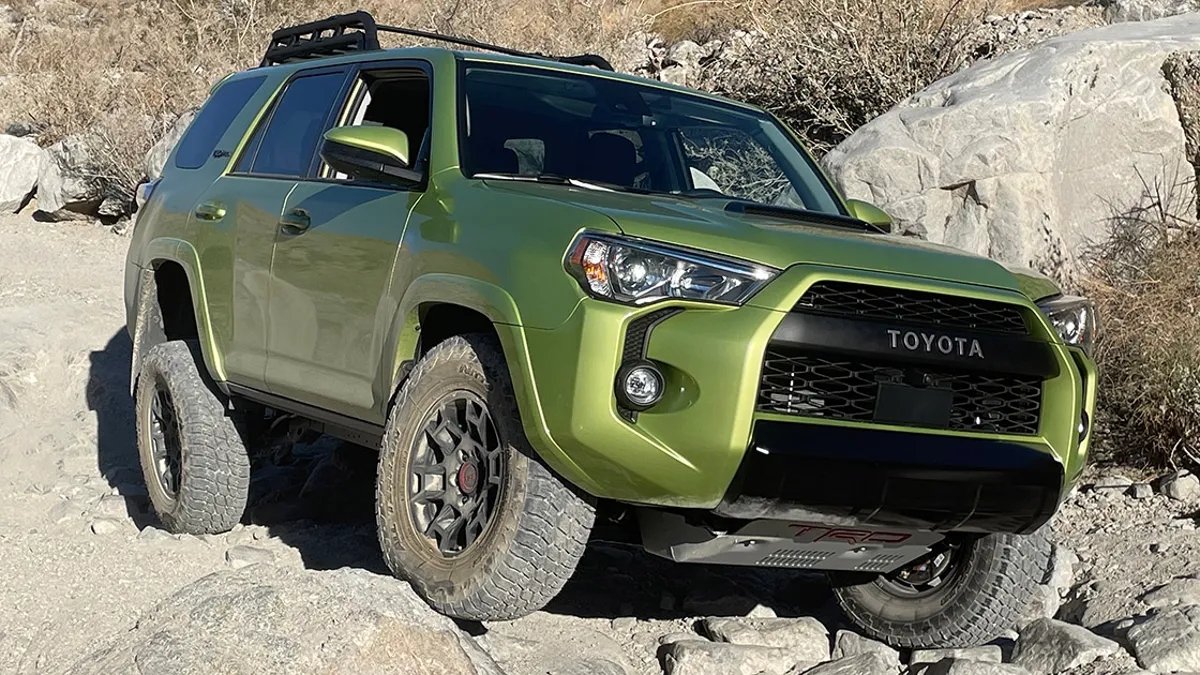
One area where the 4Runner shines is simplicity. Unlike some newer SUVs that over-rely on electronics, the 4Runner’s mechanical setup gives drivers direct control, which many off-roaders prefer.
The Multi-Terrain Select and Crawl Control systems offer added assistance by modulating throttle and braking on tough surfaces, but they’re optional tools, not crutches.
Its 9.6 inches of ground clearance and solid skid plating make it trail-hardened, even if it doesn’t quite match the modern tech or suspension articulation of its newer rivals.
And while the 4Runner is starting to show its age in areas like interior design and fuel economy, off-road geometry isn’t one of them.
The Toyota 4Runner TRD Pro continues to be a go-to choice for off-roaders who prioritize toughness and proven performance. With a solid approach angle, tried-and-true suspension, and the backing of Toyota’s reputation for reliability, it’s a classic that still gets the job done.
4. Land Rover Defender 90
The reborn Land Rover Defender 90 blends old-school off-road heritage with cutting-edge technology, and nowhere is that fusion more impressive than in its off-road geometry.
With a staggering approach angle of up to 38 degrees (when equipped with air suspension in off-road mode), the short-wheelbase Defender 90 is one of the most capable factory SUVs on the market today.
It combines traditional ruggedness with refined British engineering to create a machine that’s as comfortable in the highlands as it is in high society.
The Defender’s minimal front overhang and upright nose give it a formidable climbing posture. Unlike many luxury SUVs that sacrifice off-road capability for aesthetics, the Defender 90 is designed with trail performance at its core.
The optional adaptive air suspension not only increases ride height but also automatically adjusts for approach and departure angles depending on terrain conditions.
In its highest setting, the system lifts ground clearance to 11.5 inches, improving both the approach angle and water-fording depth.
Beyond the numbers, the Defender 90 backs up its geometry with serious hardware. It comes with permanent four-wheel drive, twin-speed transfer case, locking center differential, and an optional active locking rear diff.
Land Rover’s Terrain Response 2 system allows for precise tuning of traction, throttle, and drivetrain behavior, tailored to surfaces like sand, rock, and mud.
Despite its luxury branding, the Defender doesn’t shy away from getting dirty. Its underbody protection, flush body panels, and elevated air intake design mean it’s well-equipped for real-world off-roading.
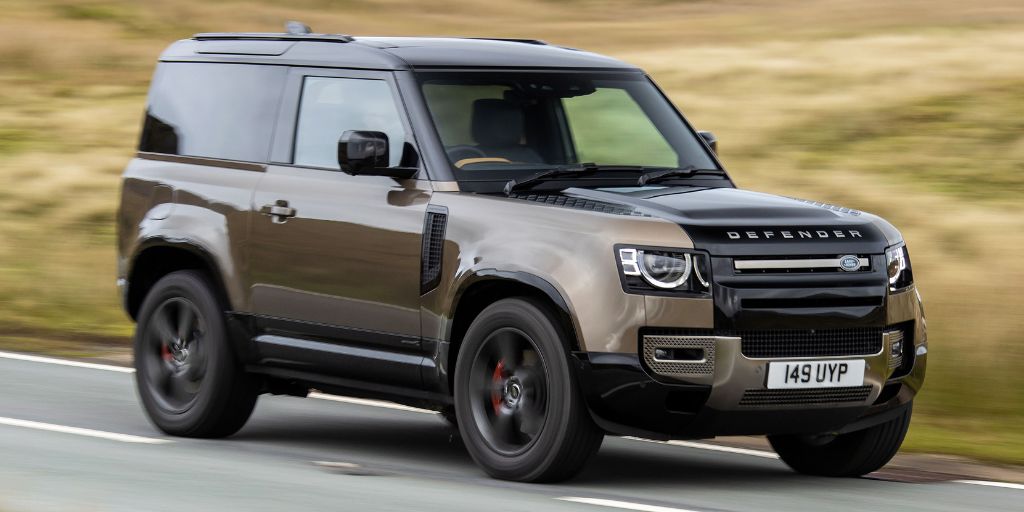
It also offers ClearSight Ground View, a camera system that lets you see “through” the hood for perfect placement on tight climbs—effectively making the most of its already aggressive approach angle.
While pricier than most trail vehicles, the Defender 90 delivers an exceptional balance of comfort and capability. It’s one of the few luxury SUVs that can climb, wade, and scramble with the best of them—all while looking sharp doing it.
If you’re seeking an SUV that can approach steep ascents with confidence and style, the Defender 90 proves that you can, indeed, have both grit and glamour.
5. Lexus GX 550 Overtrail
The all-new Lexus GX 550 Overtrail is a stunning evolution of a once-understated SUV. While previous GX models offered mild off-road potential, the 2024 Overtrail trim transforms the GX into a genuine off-road machine—one that delivers comfort, technology, and serious trail geometry in a single, rugged package.
With an approach angle of 26 degrees, it may not match the extreme numbers of the Jeep Wrangler or Defender 90, but it earns its place on this list thanks to real-world design and capability upgrades tailored to off-road use.
The Overtrail version of the GX 550 is more than a visual upgrade. It comes with 18-inch wheels wrapped in 33-inch all-terrain tires, providing greater clearance between obstacles and the underbody.
While the 26-degree approach angle is slightly lower than traditional hardcore off-roaders, it’s still very respectable for a luxury SUV—and more than enough for most trails, rock ledges, and uneven terrain.
Under the skin, Lexus equips the Overtrail with a full suite of off-road hardware, including electronic locking rear differential, adaptive variable suspension, and multi-terrain select modes.
Paired with a full-time 4WD system, Crawl Control, and Downhill Assist Control, the Overtrail gives drivers precise control even on challenging surfaces.
The front bumper is specifically shaped and raised to increase approach clearance compared to standard GX trims, and skid plates protect vital components below.
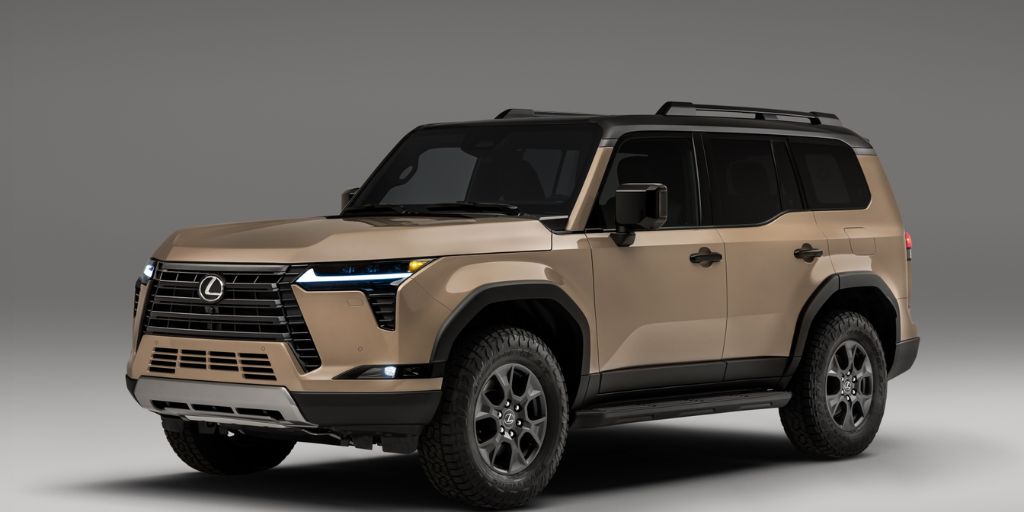
One of the Overtrail’s biggest assets is its balance. It doesn’t chase extreme off-road stats like the Wrangler or Bronco, but it offers a premium middle ground: enough approach angle for tough terrain, while still delivering the quiet cabin, plush ride, and high-end features Lexus is known for.
The GX 550 Overtrail is also built on Toyota’s TNGA-F body-on-frame platform, shared with the new Land Cruiser and Tundra, giving it a sturdy foundation designed for adventure.
And with its twin-turbo V6 engine and available electronic KDSS (Kinetic Dynamic Suspension System), it adapts beautifully between highway cruising and rocky trail crawling.
For those who want luxury with legitimate off-road chops, the GX 550 Overtrail is a confident climber with the engineering to match.
5 SUVs With Worst Off-Road Approach Angles
While many SUVs look the part with muscular fenders, high hoods, and aggressive wheel arches, not all are built to handle real off-road terrain. One of the quickest ways to spot a poser in the off-road world? Look at the approach angle.
A low approach angle limits a vehicle’s ability to climb steep inclines or clear obstacles without scraping or damaging the front bumper—and it’s often a sign that the SUV is designed more for curb appeal than trail credibility.
The approach angle measures the steepest ramp or hill an SUV can climb from a flat surface without touching the front end. It’s determined by the shape of the bumper, ground clearance, and front overhang.
Many crossovers and urban-oriented SUVs have long front overhangs and low clearance, which significantly reduce their approach angles—often falling below 20 degrees.
While that might be fine for city potholes and snowy driveways, it makes them unsuitable for serious off-roading.
In this section, we examine five SUVs with the worst approach angles currently on sale. These models may offer all-wheel drive, traction modes, or even “off-road” trims, but their low approach geometry makes them poorly suited for anything more demanding than a gravel path.
We’re not saying these are bad vehicles—they often excel in comfort, efficiency, or luxury. But if you plan to hit the trail, these are the ones you should think twice about.
Approach angle isn’t everything, but when the road ends and the terrain gets tough, it can mean the difference between pushing forward and getting stuck—or worse, tearing up your front fascia.
Let’s start with a surprising name: the Mazda CX-5, a stylish crossover that stumbles when the terrain turns steep.
1. Mazda CX-5
The Mazda CX-5 is widely praised for its stylish design, engaging handling, and premium-feeling interior—qualities that make it a top pick for urban and suburban drivers.
But despite its sleek SUV shape and available all-wheel-drive system, the CX-5 falls short when it comes to true off-road readiness.
One key limitation? Its modest approach angle of just 15.3 degrees, which makes it one of the least off-road-capable SUVs in its segment.
That low figure is largely the result of Mazda’s design priorities. The CX-5 was crafted for on-road dynamics and aesthetic appeal, not for climbing over rocks or maneuvering through steep inclines.
The front overhang is long and extends far beyond the front wheels, which significantly limits the angle at which the vehicle can approach slopes without risking damage to the bumper or underbody.
While the CX-5 does feature i-Activ AWD, a predictive all-wheel-drive system designed for snow, rain, and light dirt roads, it lacks the ground clearance and geometry required for moderate to heavy off-road terrain.
With only 7.6 inches of clearance, it’s better suited to well-maintained trails or rough pavement than actual backcountry paths.
And while Mazda includes drive modes for different conditions, there’s no low-range gearbox or off-road-focused suspension to help offset the limited angles.
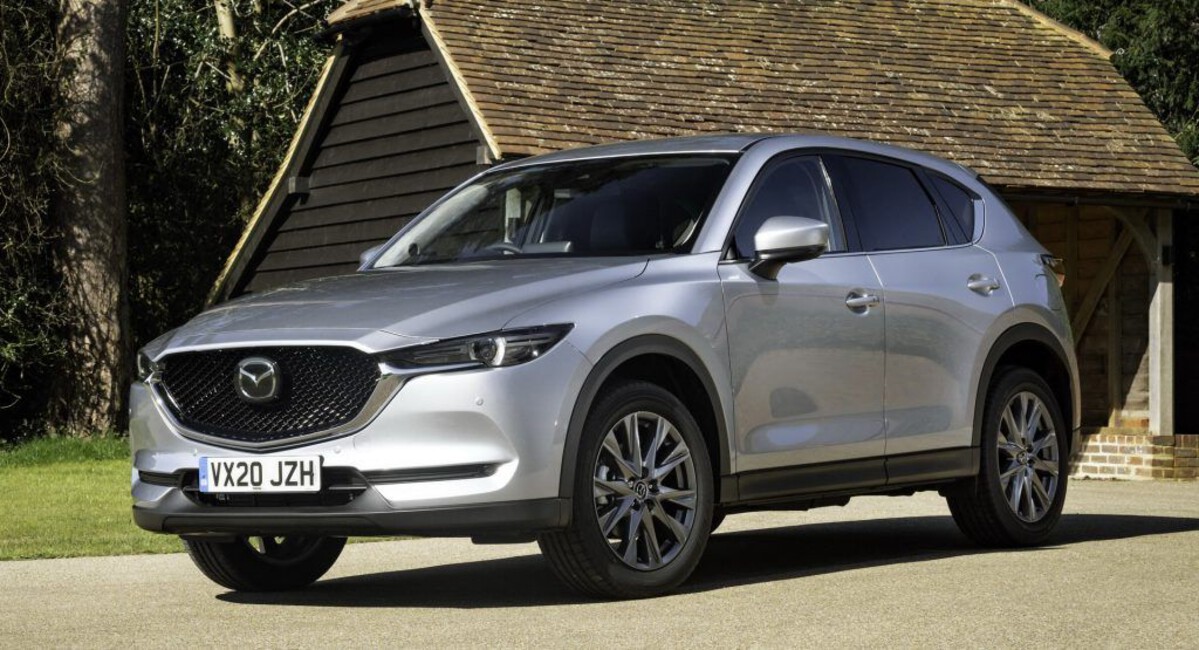
The cabin, while upscale and comfortable, offers no rugged utility elements—no grab handles, no skid plates, and no camera systems to help navigate rough trails. Simply put, it’s a road-focused SUV dressed in trail-ready clothing, and its design reflects that.
To its credit, the CX-5 never pretends to be a hardcore off-roader. It’s built for drivers who value precision driving, fuel efficiency, and sleek styling.
But for buyers who assume the crossover body style automatically includes off-road capability, the CX-5 serves as a clear reminder: form doesn’t always follow function.
If your adventures stick to pavement, the CX-5 is a winner. But if you plan to head into rugged terrain, that 15.3-degree approach angle is a red flag. You’ll want to look elsewhere for true trail toughness.
2. Hyundai Tucson
The Hyundai Tucson has grown into one of the most popular compact SUVs on the market, and it’s easy to see why. With bold styling, a tech-rich cabin, and a smooth ride, it’s a compelling choice for daily drivers and small families.
But when it comes to serious off-road use, the Tucson reveals its limitations—starting with its low approach angle of just 17.3 degrees, which makes it one of the least capable in its class for tackling steep inclines.
The Tucson’s futuristic design emphasizes aerodynamics and road presence rather than off-road practicality. Its sharply angled front fascia and elongated front bumper contribute heavily to the limited approach angle.
That means even modest obstacles like deep dips, steep driveways, or trail entry mounds can cause front-end scrapes or underbody damage if you’re not cautious.
Despite being offered with HTRAC all-wheel drive, Hyundai’s AWD system is better suited to slippery pavement and light gravel than rough trails.
It lacks any sort of low-range gearing, skid plates, or off-road tuned suspension—all features typically found in SUVs built for climbing or crawling. Ground clearance is moderate at 8.3 inches, but that’s not enough to make up for its compromised geometry.
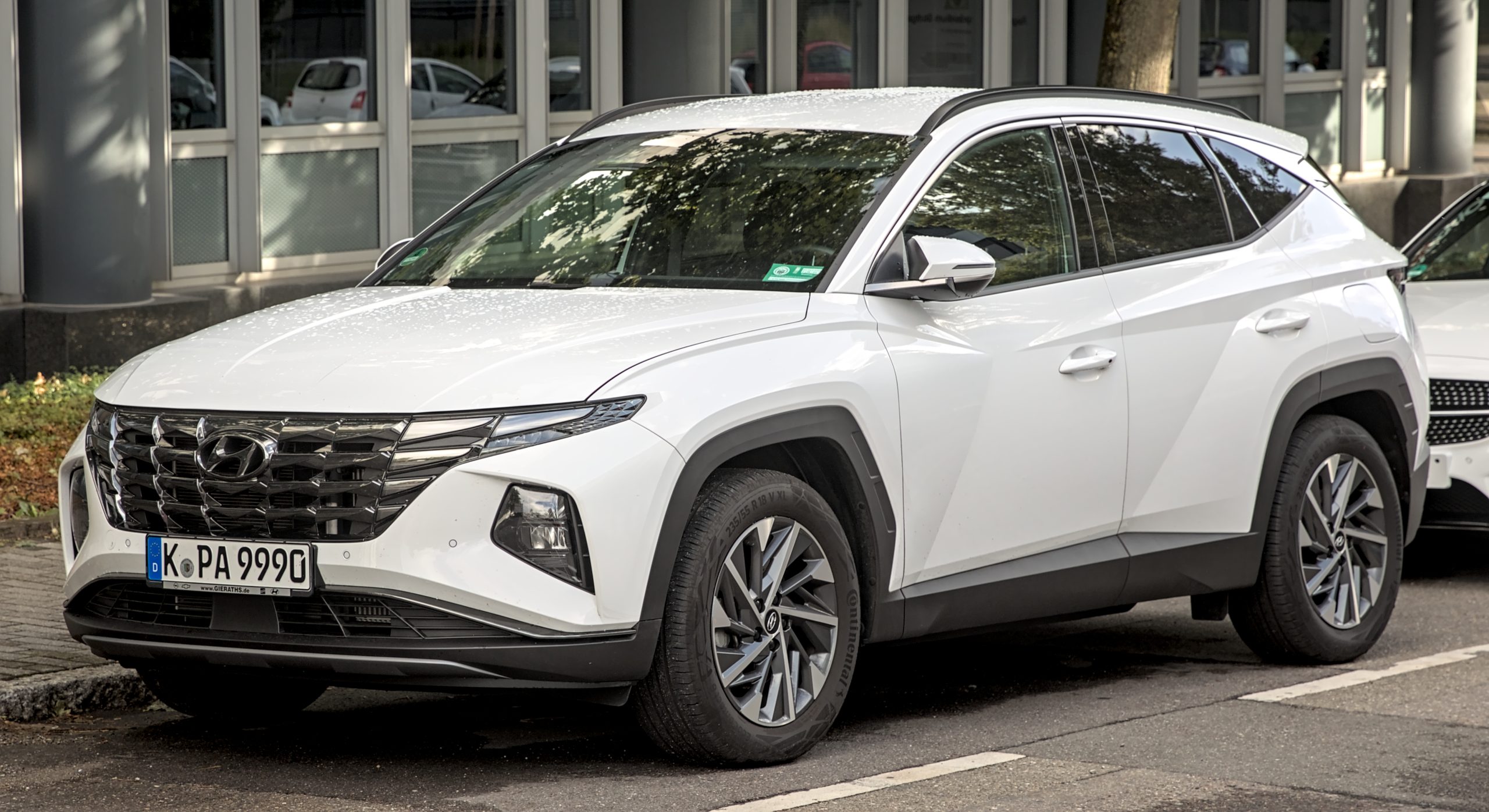
Hyundai does provide multiple terrain drive modes, such as Snow, Mud, and Sand, but these mostly adjust throttle and traction settings rather than overcoming physical trail obstacles. There’s no mechanical locking differential or adaptive suspension to assist with steep ascents.
On the inside, the Tucson excels with comfort and convenience. The interior feels near-premium, with available features like heated and ventilated seats, a panoramic sunroof, and advanced safety tech. But those luxury touches don’t translate into durability for tough environments.
Ultimately, the Tucson is a road-biased crossover with just enough rugged design cues to look the part—without actually playing it.
For drivers who stay on the pavement and occasionally navigate bad weather or light gravel, it performs admirably. But if your version of adventure includes sharp climbs or rocky terrain, the Tucson’s 17.3-degree approach angle is a hard stop.
3. Volkswagen Tiguan
The Volkswagen Tiguan is a well-rounded compact SUV that emphasizes refinement, practicality, and understated European style.
With a composed ride, roomy interior, and sleek design, it’s a favorite among buyers who want something a bit more premium without jumping to the luxury tier.
But despite its SUV badge and available all-wheel drive, the Tiguan is decidedly not off-road ready—a fact most evident in its poor approach angle of just 13.9 degrees.
This is one of the lowest approach angles in the entire SUV segment, and it’s a direct result of the Tiguan’s long, low front bumper.
Designed for visual continuity and pedestrian safety, the front end offers little clearance when navigating dips, steep inclines, or obstacles. Even a moderate trail entrance or deep pothole could result in the front fascia making contact with the ground.
Though available with 4MOTION all-wheel drive, the system is tuned more for slippery pavement or occasional snow, not serious trail use.
The Tiguan lacks off-road-specific hardware like hill descent control, underbody protection, or selectable terrain modes. Its ground clearance of 7.6 inches further emphasizes its pavement-first design philosophy.
Inside, the Tiguan is impressively comfortable and versatile. It offers optional third-row seating—rare in its class—and features like a digital cockpit, heated seats, and advanced driver-assistance systems.
But that comfort comes at the cost of rugged durability. There are no off-road assist features, recovery hooks, or camera systems designed for navigating tough terrain.
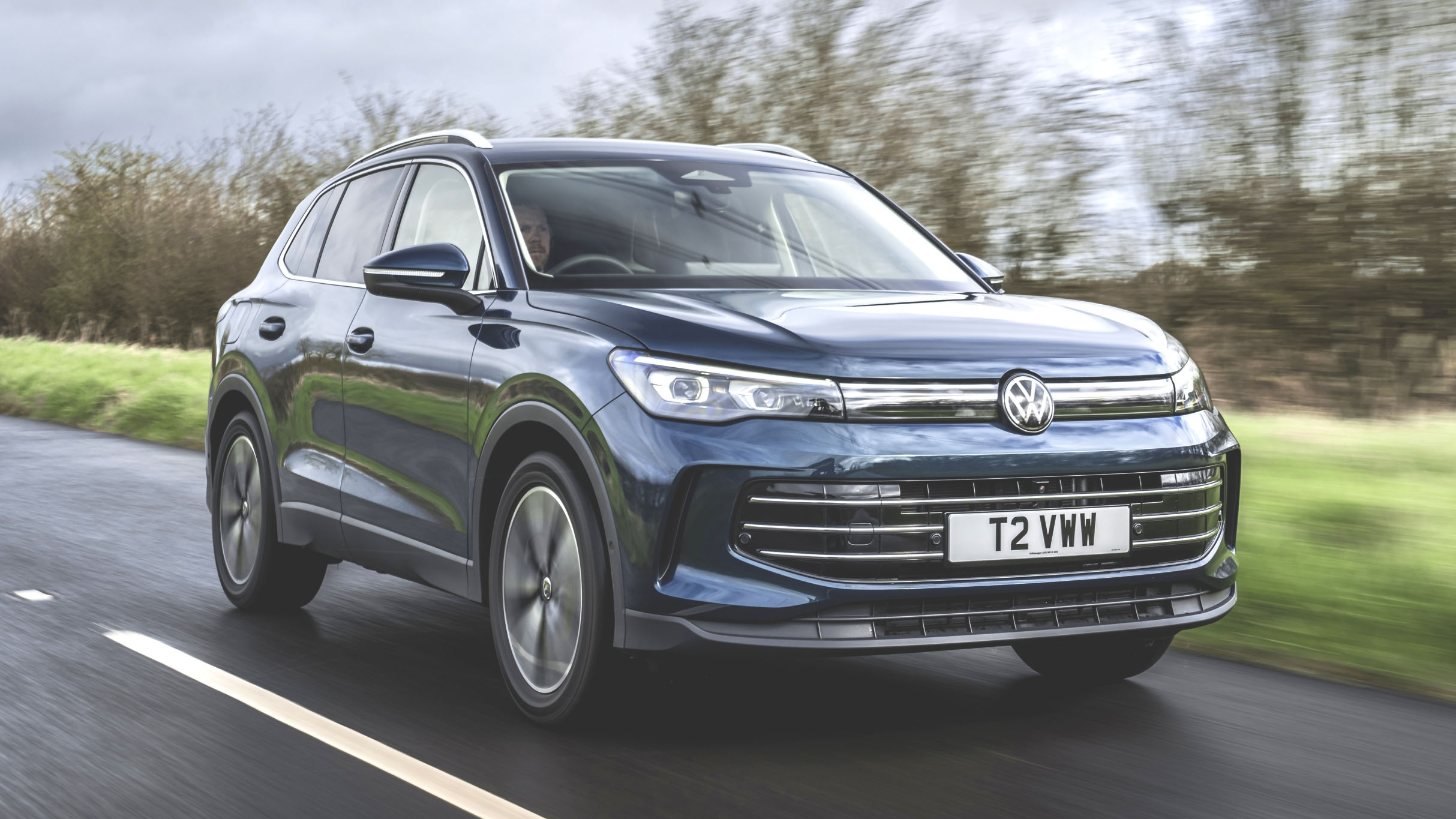
The Tiguan’s strength lies in its on-road comfort and family-friendly packaging, not in venturing off the beaten path. For daily commutes, weekend errands, or winter drives, it performs admirably.
But if your idea of adventure involves rocky climbs or steep trails, its 13.9-degree approach angle will hold you back—and could result in real damage if you attempt to push beyond its limits.
In short, the Volkswagen Tiguan is a solid urban and suburban crossover with a smart design and premium feel. But off-road? It’s out of its depth the moment things get steep.
4. Chevrolet Traverse
The Chevrolet Traverse is a full-size crossover that focuses on interior space, ride comfort, and family-hauling capabilities.
It’s a strong contender in the three-row SUV segment, offering a smooth highway ride and abundant cargo room.
But when it comes to venturing off paved roads, the Traverse falls flat—literally. Its approach angle of just 14.4 degrees puts it near the bottom of the class in terms of off-road geometry.
This limited approach angle is primarily due to the Traverse’s long and sloping front bumper, designed for aerodynamics and styling rather than rugged functionality.
While it may look bold and aggressive from the front, that low fascia severely limits the vehicle’s ability to tackle steep inclines, ruts, or uneven terrain without scraping or damage.
Despite the availability of all-wheel drive, the Traverse lacks most of the essentials needed for off-road use: no low-range gearing, no skid plates, no off-road-tuned suspension.
Even with AWD, it’s primarily tuned for wet pavement and light snow, not challenging terrain. Ground clearance is also modest at 7.5 inches, further reducing the Traverse’s ability to navigate trail obstacles.
Chevrolet does offer a “RS” trim that looks sportier, but it doesn’t improve off-road angles or mechanical trail readiness.
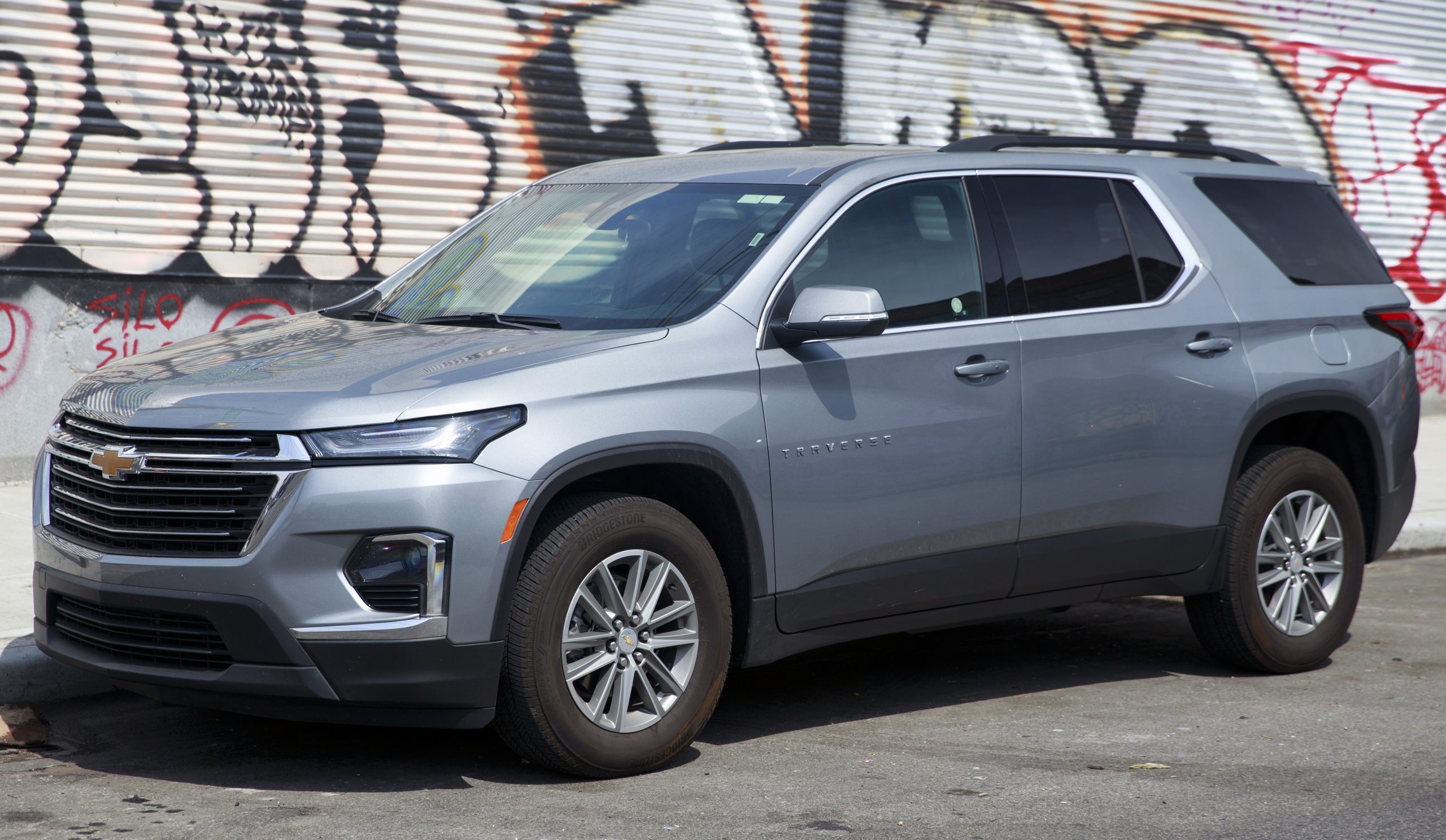
The more rugged-looking Traverse Z71, introduced for the 2024 model year, does slightly improve trail capability but still lags behind true off-roaders in geometry and hardware. Even then, the approach angle remains limited due to the vehicle’s size and long front overhang.
Inside, the Traverse shines. With seating for up to eight passengers, a user-friendly infotainment system, and a quiet cabin, it’s ideal for road trips and daily commuting. But those strengths don’t translate to dirt, rocks, or steep trails.
In the end, the Chevrolet Traverse is a people mover, not a peak climber. It’s built to haul kids and cargo, not conquer backwoods terrain.
That 14.4-degree approach angle is a clear indicator: while the Traverse may look like an SUV, when the trail turns vertical, it’s time to turn around.
5. Kia Sorento
The Kia Sorento has evolved into one of the most versatile midsize SUVs on the market. With a range of powertrains—including hybrid and plug-in hybrid options—plus three-row seating in a manageable footprint, it offers incredible value for families and commuters alike.
But while the Sorento brings a lot to the table, off-road capability isn’t one of its strengths. That’s clear in its lackluster approach angle of just 16.8 degrees, which limits its ability to tackle anything more challenging than a gravel path.
Much of the Sorento’s design is focused on maximizing interior space and styling, which leads to a long front overhang and a low bumper profile.
These features, while aesthetically pleasing and aerodynamic, result in a front end that’s particularly vulnerable on steep terrain. Even mild off-road trails can become problematic if sharp angles are involved, leading to bumper scrapes or underbody damage.
The available AWD system helps in slippery conditions, and Kia even markets an X-Line trim with a slightly raised ride height and rugged design cues.
But even that version doesn’t significantly improve the approach angle, and it lacks the off-road-focused features found in trail-ready SUVs like skid plates, low-range gearing, or locking differentials.
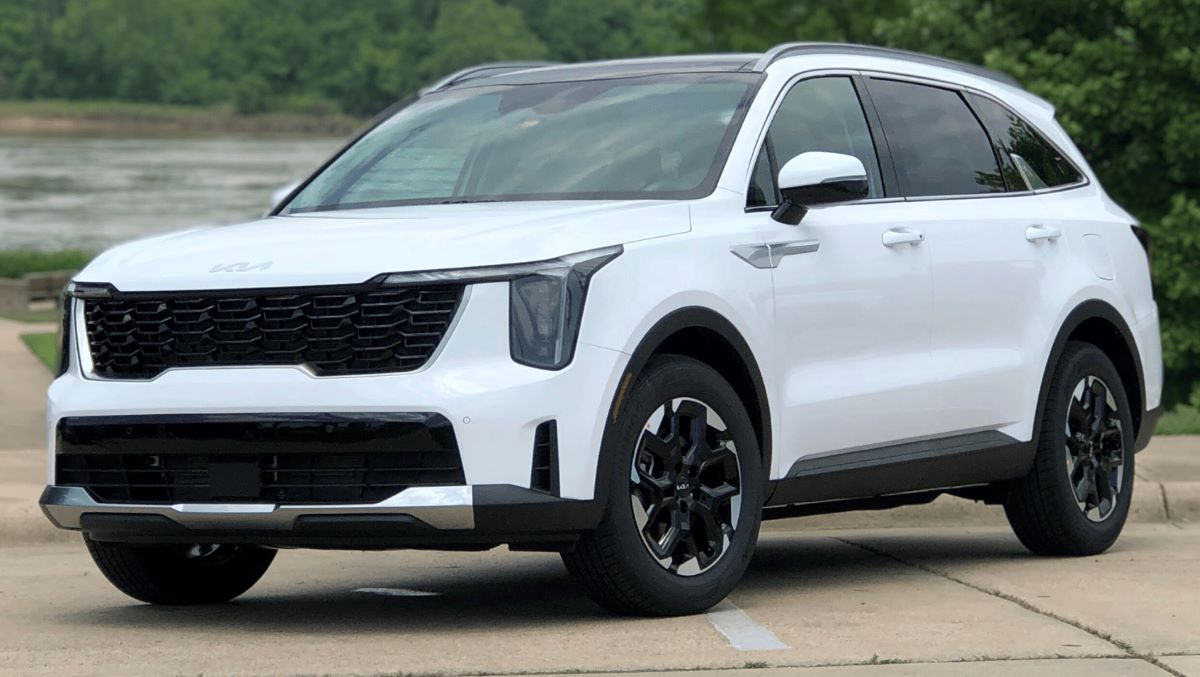
The Sorento’s ground clearance of 6.9 to 8.3 inches (depending on trim) is respectable for a crossover, but when combined with the limited approach angle, it still doesn’t inspire confidence off the pavement. It’s best suited for dirt roads, grassy fields, or light snow—not for navigating rocky ascents or sharp drops.
Inside, the Sorento excels with its high-quality materials, user-friendly technology, and efficient use of space. It’s a fantastic choice for families who need flexible seating and strong fuel economy—especially in hybrid form.
But for those looking to escape the suburbs and head into rugged terrain, the Sorento’s geometry quickly becomes a limiting factor.
In summary, the Kia Sorento offers a lot of smart features and road-friendly strengths, but its off-road form doesn’t match its function. That 16.8-degree approach angle is a clear boundary: it may look adventurous, but it’s not built to climb.
In today’s SUV market, the lines between rugged utility and urban convenience are increasingly blurred. Manufacturers are quick to label nearly every tall vehicle as “off-road capable,” but when it comes to true trail readiness, numbers like approach angle don’t lie.
This comparison between the best and worst approach angle SUVs reveals just how vast the gap can be between a serious off-roader and a street-focused crossover wearing an adventurous facade.
Vehicles like the Jeep Wrangler Rubicon, Ford Bronco Badlands, and Land Rover Defender 90 prove that with the right engineering—short overhangs, raised bumpers, and strategic suspension—you can design a vehicle that thrives in the wild.
These SUVs are not just styled to look tough; their approach angles, which often exceed 35–45 degrees, make them functional climbers capable of scaling real-world obstacles.
Whether you’re rock crawling, hill climbing, or simply trying to get to that remote campsite, these vehicles are equipped to go further—both in form and function.
In contrast, models like the Mazda CX-5, Volkswagen Tiguan, and Chevrolet Traverse emphasize comfort, style, and practicality, but fall flat—literally—when it comes to trail geometry.
With approach angles dipping below 17 degrees, they’re vulnerable to front-end damage in even moderately steep terrain.
That’s not to say they’re bad vehicles; in fact, they’re often better suited for the average driver’s needs. But if your adventures take you off the pavement, these are clear examples of SUVs that look the part but can’t play it.
Understanding approach angle is more than just reading spec sheets—it’s about knowing what kind of driving experience you want.
For off-roaders, it’s a crucial figure that defines where you can go and how confidently you can get there. For urban commuters, it might not matter at all.
In the end, choosing the right SUV means being honest about your driving needs. If your journeys include rugged terrain and steep climbs, trust the numbers.
And if you’re sticking to city streets, you can still enjoy SUV benefits—just don’t expect your crossover to conquer the backcountry without a few scars.
Also Read: 5 Reliable Cars for Uber and 5 That Lose You Stars

